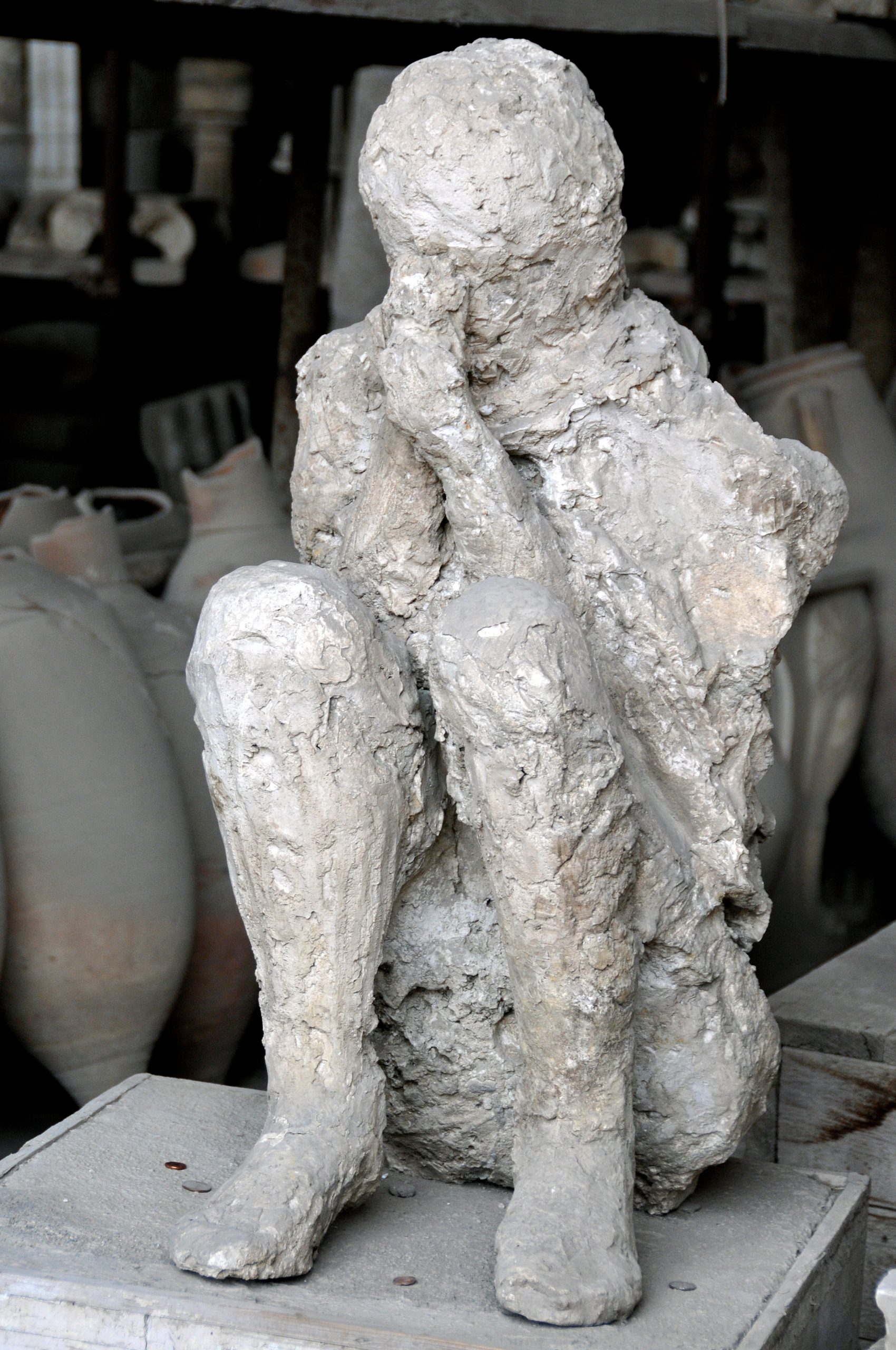Overview
Introduction to Pompeii
Pompeii, a once thriving ancient Roman city, is now a captivating archaeological site that provides a remarkable glimpse into the daily life of its inhabitants. Located near modern-day Naples in Italy, Pompeii was buried under layers of volcanic ash and pumice when Mount Vesuvius erupted in 79 AD. This catastrophic event preserved the city and its buildings in astonishing detail, allowing us to witness the Roman civilization frozen in time. The rediscovery and excavation of Pompeii in the 18th century brought to light an extraordinary wealth of artifacts, revealing the advanced infrastructure, vibrant culture, and social dynamics of the Roman Empire.
The Destruction of Pompeii
The destruction of Pompeii was a catastrophic event that forever changed the course of history. In 79 AD, the nearby volcano Mount Vesuvius erupted, burying the city of Pompeii under a thick layer of volcanic ash and pumice. The eruption was sudden and violent, catching the inhabitants of Pompeii off guard. The ash and debris quickly covered the city, preserving it in a state of suspended animation for nearly two thousand years. The destruction of Pompeii was a tragic event, but it also had a profound impact on our understanding of ancient Roman life. The preserved remains of the city provide a unique snapshot of daily life in the Roman Empire, offering insights into everything from architecture and infrastructure to social customs and economic activities. The excavation and preservation of Pompeii have been ongoing for centuries, with archaeologists uncovering a wealth of artifacts and information about the ancient world. The destruction of Pompeii serves as a reminder of the power of nature and the fragility of human civilization, and it continues to captivate and inspire people from around the world.
Rediscovery and Excavation
After the devastating eruption of Mount Vesuvius in 79 AD, Pompeii was buried under layers of ash and forgotten for centuries. It wasn’t until the 18th century that the ancient city was rediscovered and excavated, revealing a remarkably preserved snapshot of Roman life. The first major excavation took place in 1748, led by Spanish military engineer Rocque Joaquin de Alcubierre. Over the years, numerous archaeological expeditions have unearthed a wealth of artifacts, including frescoes, mosaics, and even the remains of its inhabitants. The excavation efforts have provided invaluable insights into the daily lives of the ancient Romans, their customs, and their architectural achievements. Today, Pompeii stands as a testament to the power and resilience of the Roman Empire, attracting millions of visitors each year who come to marvel at its well-preserved ruins and immerse themselves in the rich history of the ancient world.
The Roman Empire

Rise and Expansion
During its peak, the Roman Empire experienced a period of significant growth and expansion. Under the rule of emperors like Augustus and Trajan, the empire expanded its territories to include vast regions of Europe, North Africa, and the Middle East. This expansion was fueled by a combination of military conquests, strategic alliances, and efficient administration. One notable emperor, Hadrian, made significant contributions to the empire during his reign. He is best known for his extensive building projects, including the construction of the famous Hadrian’s Wall in Britain. This monumental structure served as a symbol of Roman power and marked the northernmost boundary of the empire. Hadrian’s contributions to the empire also extended to the realms of law, architecture, and cultural patronage. His reign marked a period of stability and prosperity for the Roman Empire, setting the stage for its continued dominance in the ancient world.
Government and Administration
The government and administration of the Roman Empire was a complex and intricate system that played a crucial role in the empire’s success and longevity. Led by emperors who held absolute power, the empire was divided into provinces, each governed by a governor appointed by the emperor. These governors were responsible for maintaining law and order, collecting taxes, and overseeing the administration of justice. The Roman Senate, composed of wealthy and influential individuals, served as an advisory body to the emperor. It was responsible for making important decisions and passing laws. The empire also had a vast bureaucracy that managed various aspects of governance, such as finance, public works, and military affairs. The efficient administration of the Roman Empire allowed it to expand its territories, maintain control over its vast population, and ensure the smooth functioning of its economy. The government and administration of the Roman Empire have been the subject of fascination and inspiration, with numerous books, documentaries, and even movies, such as the Ridley Scott film director‘s epic historical drama ‘Gladiator’, showcasing the grandeur and complexity of this ancient system.
Culture and Society
Culture and society in the Roman Empire were deeply intertwined. The empire encompassed a vast and diverse range of cultures, languages, and traditions, all of which contributed to the rich tapestry of Roman society. The Roman Empire was known for its advanced infrastructure, including Ancient Roman Concrete techniques, which allowed for the construction of impressive buildings and structures that still stand today. The empire also had a complex social hierarchy, with the emperor at the top and various classes of citizens below. Slavery was widespread, and the economy relied heavily on agriculture, trade, and taxation. Roman society placed a strong emphasis on family and religion, with the paterfamilias (head of the household) holding significant authority. The Roman Empire was a melting pot of different cultures and ideas, and its legacy can still be seen in modern-day society.
Pompeii’s Legacy

Preservation of Roman Architecture
Preservation of Roman Architecture
The preservation of Roman architecture in Pompeii has provided invaluable insights into the engineering and construction techniques of the ancient Romans. The city’s buildings, such as the grand amphitheater and the impressive Forum, showcase the mastery of Roman architects in creating structures that have withstood the test of time. The meticulous preservation efforts since the rediscovery of Pompeii in the 18th century have allowed historians and archaeologists to study the intricate details of Roman architectural design. The excavations of Pompeii have revealed not only the physical structures but also the decorative elements, such as frescoes and mosaics, that adorned the buildings. These discoveries have contributed to our understanding of Roman aesthetics and artistic techniques.
Furthermore, the preservation of Pompeii’s architecture has also enabled the reconstruction of the city’s urban layout. Through the meticulous documentation of the buildings and their spatial relationships, historians have been able to recreate a comprehensive map of Pompeii, providing a glimpse into the daily life of its inhabitants. The well-preserved houses, with their courtyards, gardens, and intricate interior designs, offer a vivid portrayal of ancient Roman domestic life.
The preservation efforts have not been without challenges. The bombing of Pompeii during World War II caused significant damage to some structures, requiring extensive restoration work. However, these challenges have only reinforced the importance of preserving and protecting the remaining architectural treasures of Pompeii.
In the 1950s, the preservation efforts received a boost with the establishment of the Pompeii Archaeological Park, which continues to oversee the conservation and maintenance of the site. This initiative has ensured that future generations can continue to appreciate and learn from the architectural marvels of Pompeii.
The preservation of Roman architecture in Pompeii stands as a testament to the enduring legacy of the ancient Roman Empire and its impact on the fields of architecture, engineering, and art. The city’s ruins serve as a reminder of the grandeur and sophistication of Roman civilization, while also highlighting the fragility of human creations in the face of natural disasters. Through the preservation and study of Pompeii, we gain valuable insights into the past, allowing us to appreciate and learn from the achievements and mistakes of our predecessors.
Insights into Ancient Roman Life
Ancient Pompeii offers valuable insights into the daily life and culture of the Roman Empire. Through the meticulous excavation and preservation of the city, archaeologists have uncovered a wealth of information about various aspects of Roman society. Social structure was a prominent feature, with clear divisions between the patricians and the plebeians. The city’s baths and amphitheater provided a glimpse into the leisure activities and entertainment enjoyed by the Romans. The Forum, a central public square, served as a hub for political, commercial, and social activities. The Villa of the Mysteries, a well-preserved villa in Pompeii, revealed fascinating details about the religious beliefs and practices of the time. However, these insights into ancient Roman life are not without their controversies. Some scholars argue that the focus on Pompeii and its affluent residents may present a skewed representation of Roman society, neglecting the struggles and hardships faced by the majority of the population. Furthermore, the preservation of Pompeii may inadvertently perpetuate the romanticized view of the Roman Empire, obscuring the darker aspects of its history. Despite these debates, the archaeological discoveries in Pompeii continue to provide valuable knowledge about the daily lives, customs, and beliefs of the ancient Romans.
Tourism and Economic Impact
The ancient city of Pompeii has become a major tourist attraction, drawing millions of visitors each year. The preservation of its Roman architecture and the insights it provides into ancient Roman life have made it a fascinating destination for history enthusiasts and archaeology lovers alike. The tourism industry in Pompeii has experienced significant growth, with the city’s ruins serving as a catalyst for economic development in the region. The influx of tourists has led to the establishment of hotels, restaurants, and souvenir shops in the surrounding area, creating job opportunities and boosting the local economy. Additionally, the rediscovery of Pompeii and its subsequent excavation have sparked worldwide interest in ancient civilizations, leading to the establishment of museums dedicated to showcasing artifacts from the city. One notable example is the New British Museum, which houses a collection of Pompeian artifacts that provide a glimpse into the daily lives of its inhabitants. The economic impact of Pompeii’s tourism industry and the continued exploration and research of the site highlight the enduring legacy of this ancient city and its significance in understanding the Roman Empire.
Conclusion

Enduring Significance of Pompeii
Pompeii’s enduring significance lies in its ability to provide us with a unique window into the daily life and culture of the ancient Roman Empire. The preservation of its architecture, art, and artifacts has allowed historians and archaeologists to piece together a comprehensive understanding of the city and its inhabitants. The excavation of Pompeii has revealed invaluable insights into various aspects of ancient Roman life, including social structure, economic activities, and religious practices. It has also shed light on the advanced engineering and architectural techniques employed by the Romans. Moreover, Pompeii’s tragic destruction and subsequent rediscovery serve as a stark reminder of the fragility of human existence and the power of natural disasters. The site continues to attract millions of visitors each year, who come to marvel at the remarkably preserved ruins and immerse themselves in the history and grandeur of the Roman Empire. What to Know: Pompeii’s legacy extends far beyond its archaeological significance, as it serves as a testament to the resilience and endurance of human civilization in the face of adversity.
Lessons from the Roman Empire
The Roman Empire left behind a wealth of knowledge and lessons that continue to shape our understanding of governance, culture, and society. One of the most significant lessons we can learn from the Roman Empire is the importance of strong leadership and effective governance. The Romans were masters of administration and their system of government, with its emphasis on hierarchy and centralized power, paved the way for future civilizations. Additionally, the Roman Empire’s cultural achievements, such as literature, art, and architecture, have had a lasting impact on Western civilization. The preservation of Roman architecture, in particular, has allowed us to study and appreciate the grandeur and engineering prowess of ancient Rome. Furthermore, the excavation of Pompeii has provided invaluable insights into daily life in ancient Rome, revealing details about social structures, economic activities, and even the personal lives of its inhabitants.
The legacy of Pompeii and the Roman Empire extends beyond academia and has become a major tourist attraction, drawing millions of visitors each year. The ruins of Pompeii offer a glimpse into the past, allowing visitors to walk through the streets and buildings that once thrived with life. This tourism has not only contributed to the local economy but has also fostered a greater appreciation for history and the need for its preservation. The enduring significance of Pompeii lies in its ability to transport us back in time and remind us of the fragility of civilizations. It serves as a reminder that even the mightiest empires can crumble, but their legacy and lessons can endure.
As we continue to explore and research the Roman Empire and Pompeii, we uncover new discoveries and deepen our understanding of the past. The lessons learned from the Roman Empire, such as the importance of infrastructure, cultural exchange, and the consequences of unchecked power, are still relevant today. The study of ancient civilizations allows us to reflect on our own society and consider the impact of our actions on future generations. In conclusion, Pompeii and the Roman Empire serve as powerful reminders of the rise and fall of civilizations, and they provide us with invaluable lessons that continue to shape our world.
Continued Exploration and Research
Continued exploration and research of Pompeii and the Roman Empire have provided invaluable insights into the ancient world. Archaeologists and historians have meticulously studied the ruins of Pompeii, uncovering a wealth of information about the daily lives, culture, and society of the Roman people. Through the examination of artifacts, architecture, and written records, researchers have pieced together a comprehensive understanding of the city and its inhabitants. Ongoing excavations and scientific analysis continue to shed light on previously unknown aspects of Pompeii and the Roman Empire. The exploration and research of Pompeii not only contribute to our knowledge of the past, but also offer valuable lessons for the present and future. By studying the rise and fall of the Roman Empire, we can gain insights into the complexities of governance, the impact of cultural exchange, and the consequences of environmental disasters. The enduring significance of Pompeii lies not only in its preservation of Roman architecture and artifacts, but also in its ability to teach us about the triumphs and challenges of ancient civilizations. As exploration and research efforts continue, the story of Pompeii and the Roman Empire will undoubtedly continue to captivate and educate generations to come.
Avid Writer with invaluable knowledge of Humanity!
Upcoming historian with over 30 million views online.
“You make your own life.”





